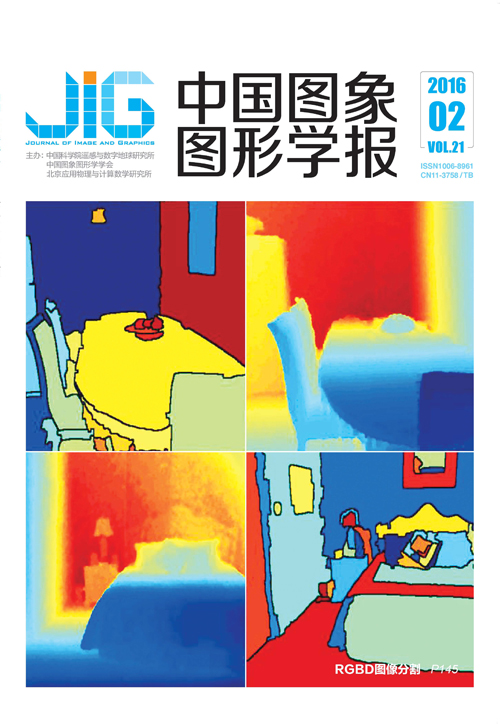
顾及降维的多尺度空间关系广义一致性度量
摘 要
目的 多尺度空间关系一致性评价是多尺度空间数据冲突检测或数据匹配的重要环节,现有方法主要集中于相同或相近比例尺空间关系的相似性计算,对尺度跨度较大、发生维度变化情形的一致性评价考虑较少,且定性的概念距离度量方法难以适用于具有维度差异的多尺度空间数据。针对上述问题,提出一种顾及降维的多尺度空间关系广义一致性度量方法。方法 首先,引入同名对象概念,分析多尺度范畴下同名对象的表现特征。考虑到维度变化对空间关系的影响,结合并扩展已有的空间关系度量方法,分别提出了广义的拓扑关系、方向关系、距离关系相似性度量方法。然后,构建小尺度场景的同名对象邻近关系图,为减少一致性计算代价,依据不同空间关系特点将邻近关系图化简为各类空间关系邻近图。最后,通过依次计算各类空间关系的相似性值和联合相似性值来判断多尺度场景空间关系表达的一致性。结果 通过对1:1万基础地理数据和1:5万派生数据进行空间关系相似性的定量计算分析,并与现有概念距离方法进行比较,验证了本文方法能更精确地度量尺度跨度较大的空间关系一致性。结论 该评价方法具有广泛适用性,可用于辅助地图综合、多尺度空间数据匹配以及多尺度空间数据建库等过程。
关键词
Generalized consistency assessment method for multi-scale spatial relationship considering collapse
Chen Di1,2, Zhu Xinyan1, Yue Han1, Bao Shuming2(1.State Key Laboratory of Information Engineering in Surveying, Mapping and Remote Sensing, Wuhan University, Wuhan 430079, China;2.China Data Center, University of Michigan, Packard Rd. 330, Ann Arbor, Michigan 48108, USA) Abstract
Objective Maintaining the consistency of a multi-scale spatial relationship is an important step in conflict detection of multi-scale spatial data and data matching. Existing methods mainly focus on the relationship similarity measurement of spatial data with identical or similar resolutions and areless concerned with the consistency of spatial relationship for collapse operation. In addition, the common concept-distance-based evaluation method cannot effectively achieve multi-scale representation. Hence, a generalized consistency assessment method for a mult-iscale spatial relationship that considers collapse operation is proposed. Method The concept of homonymous entity and its characteristics are introduced and discussed within the scope of multi-scale spatial representation. By considering the influences of the collapse operation in generalization, three generalized consistency assessment methods are proposed based on topological relation, cardinal direction relation, and distance relation. Then, a graph representing the adjacent relation of homonymous entities is adopted to implement and visualize the similarity calculation. To reduce the cost of calculation, the graph is simplified and extracted as subgraphs of spatial relationship. Finally, the consistency of multi-scale spatial representation can be judged according to the spatial relationship similarities based on the obtained relation graphs. The 1:10 000 geographical foundation data and the 1:50 000 derived data of a common area are used in the case study. Result Experimental results show that, compared with the concept-distance-based method, the proposed generalized consistency assessment method is more effective and has a wider application scope. Conclusion This consistency assessment method can be effectively used in map generalization, multi-scale spatial database building, and spatial scene matching. Our subsequent work shall focus on establishing a systematic consistency assessment method from the perspectives of individual form, overall gestalt principle, and spatial semantics.
Keywords
|



 中国图象图形学报 │ 京ICP备05080539号-4 │ 本系统由
中国图象图形学报 │ 京ICP备05080539号-4 │ 本系统由